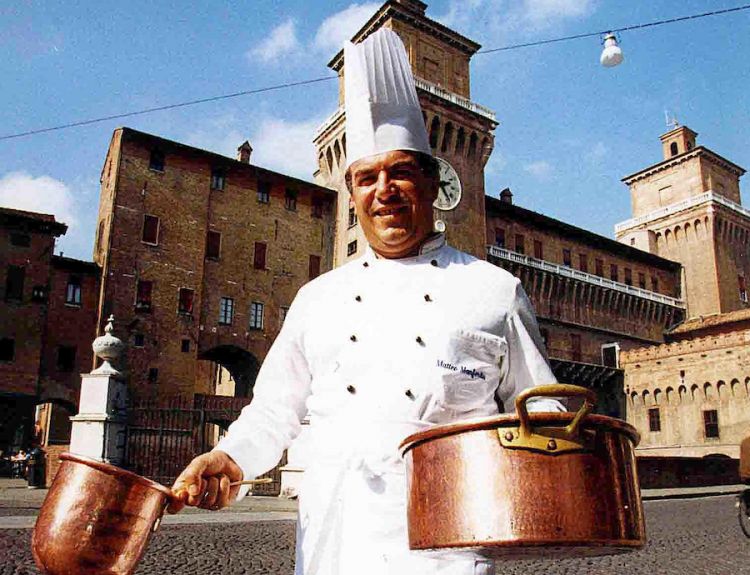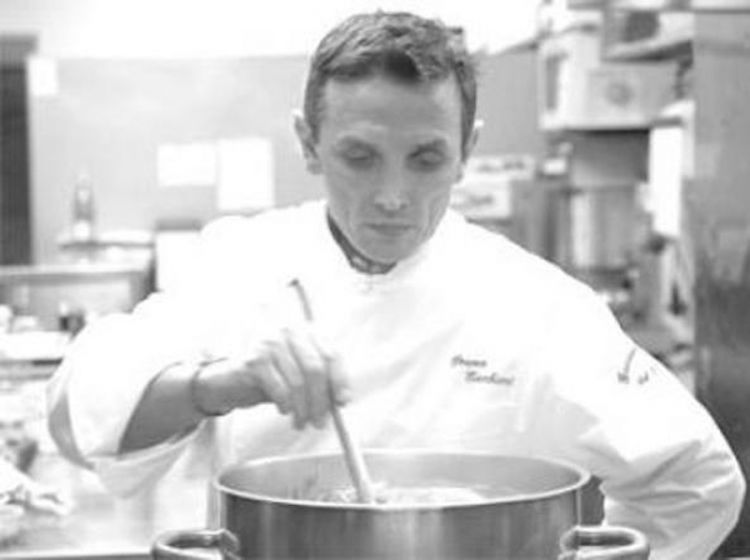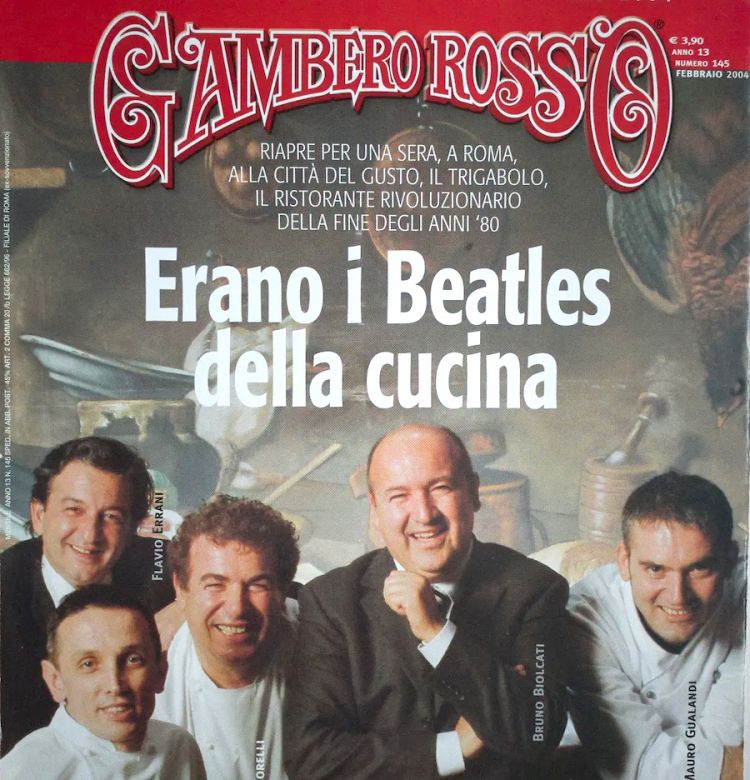In the galaxy of fine restaurants, there are two legendary names. One is now shrouded in the mists of time, Cantarelli in Samboseto near Parma, and the second one is closer to us, Trigabolo in Argenta in the province of Ferrara. The former closed on 31 December 1982 because Mirella and Giuseppe Cantarelli were burdened with fatigue rather than years – she died in 1986 at the age of 55 and he in 1992 at 73. Trigabolo was instead part of the Eighties and Nineties, open until 1997.
The first act was in 1979 when Giacinto Rossetti, a toy salesman, took over a pizzeria and developed it as a restaurant with extraordinary innovative propulsion in 1983 with the arrival of chefs who would leave a deep mark, starting with Igles Corelli and continuing with Bruno Barbieri, just 17 at the time, pastry chef Mauro Gualandi, the Leone brothers, Marcello and Gianluca, Pierluigi Di Diego, Italo Bassi, Marco Boni...

Bruno Barbieri when he still didn't think he would become a TV star
As in the case of
Cantarelli,
Michelin would later give them two stars. With one significant difference:
Trigabolo would have received three, had everything suddenly not gone haywire.
They did not experience that natural downward parabola common to millions and millions of other businesses and people everywhere on Earth. Everything exploded, like those rockets that burst in flight. People say that Michelin acknowledged the third star posthumously. A plaque hung on a wall of the Bolognese restaurant dei Leoni at the time. Certainly, Trigabolo did not express its full potential and those who experienced it at least once - and they would be at least 45 years old today - wonder how high it would get. ‘We only experienced the upward phase, and not even all of it. We never reached our natural peak and yet everyone remembers us and tells us that we were destined to go much higher. This gratifies us beyond a missed star,' says Igles Corelli, born in 1955.

Bruno Barbieri when he still didn't think he would become a TV star
And if we’re now talking about this magical past again, it is because
Salvatore Marchese, a journalist from Castelnuovo Magra, a hillside village between Lunigiana and Versilia, has dedicated his latest work not so much to the restaurant itself, but to the event that was born there and enlightened the restaurant world beyond Italy. It was called
Saperi e Sapori. It took place over six years, from 1991 to 1997, and was preceded by
Argenta a tavola, which began in 1986.
The book, published by
Tarka and titled
Andavamo a cena a ‘Saperi e Sapori’ nel Delta del Po. Cuochi e ricette che hanno cambiato la cucina italiana, recounts its story, which in practice passed the baton to
Lo mejor de la gastronomy in San Sebastian in the Basque Country and, with more products and fewer chefs, to
Slow Food's
Salone del Gusto. I was, of course, very pleased to hear
Corelli praise
Identità Golose as the heir, eight years later. All this to set a line that was not yet clearcut at the time, some thirty years ago. But
Trigabolo and, even more so,
Sapori e Sapori formed a borderline between those who were really concerned with criticism, gastronomic history with eyes open to the world, which was much smaller than today’s but that was what it was, and those who were above all looking for a dining place without expressing curiosity.
Salvatore Marchese was there, and we must be grateful to him for the effort he put into reconstructing those moments, at a time when he was so physically fragile that he pointed out he did not write it himself, but dictated it to his son
Francesco. While waiting to review the book, I thought that it was only right to remember the treasure that Argenta contained. Two important notes emerged on the 18th of March March in the re-enactment in the main hall of the Convento dei Cappuccini. This was the location of the original event, summoning the most important chefs to cook, including
Ferran Adrià who got the dish completely wrong. One detail in particular: the first Pacojet first appeared there, and now it’s everywhere.

The famous Gambero Rosso cover that, in February 2004, summarised the revolutionary power of the Trigabolo brigade with a comparison with The Beatles
First note: what was
Saperi e Sapori for those who led the
Trigabolo?
Corelli's answer was striking: 'It was our internet. Today you know everything thanks to the net, back then you either got busy or kept to yourself'. The second: 'It is natural that we are all 25 years older today, but we are not and do not feel like veterans'. By the way, I deeply detest these figures and their related rhetoric.
Final note: on the 23rd of June a charity evening dedicated to Trigabolo will take place at the Grand Hotel da Vinci in Cesenatico. Seating 400 people, the proceeds will go in favour of the Istituto Oncologico di Romagna. Saperi e Sapori is not the past.
Translated into English by Slawka G. Scarso